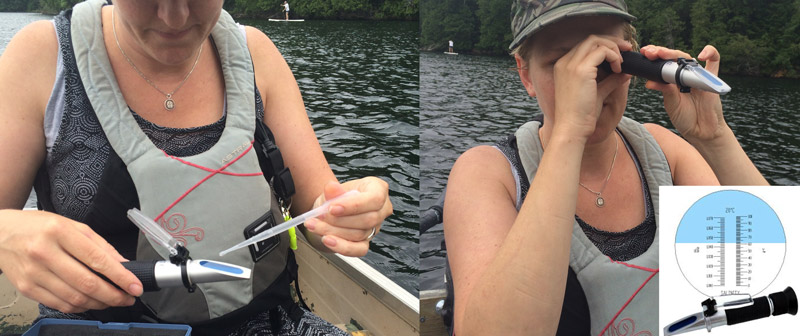Salinity (Refractometer)
What it means
Salinity is salts dissolved in water. They come from rocks and soil. The average salinity of the ocean is 35 ppt (parts per thousand). But, things like melting ice and rivers dilute the salty water, so many coastal areas have lower readings.
Our oceans vary in salinity too: Near the shores, rivers dilute the ocean to reduce salinity. In the arctic, melting icecaps also affect salinity.
How to measure
- Using the eye dropper, put a couple drops onto the slide, making sure to fully cover the surface.
- Peer inside and determine the measurement.
- Record this in ppt.
- Be sure to also take water temperature, as these are correlated.
Be sure to use the cloth provided to clean off the screen when you’re finished.
Why it's important
There are two factors that affect ocean water density. The most important one is temperature, and the second most important is salinity. Density is important in understanding ecosystems and ocean flows.

